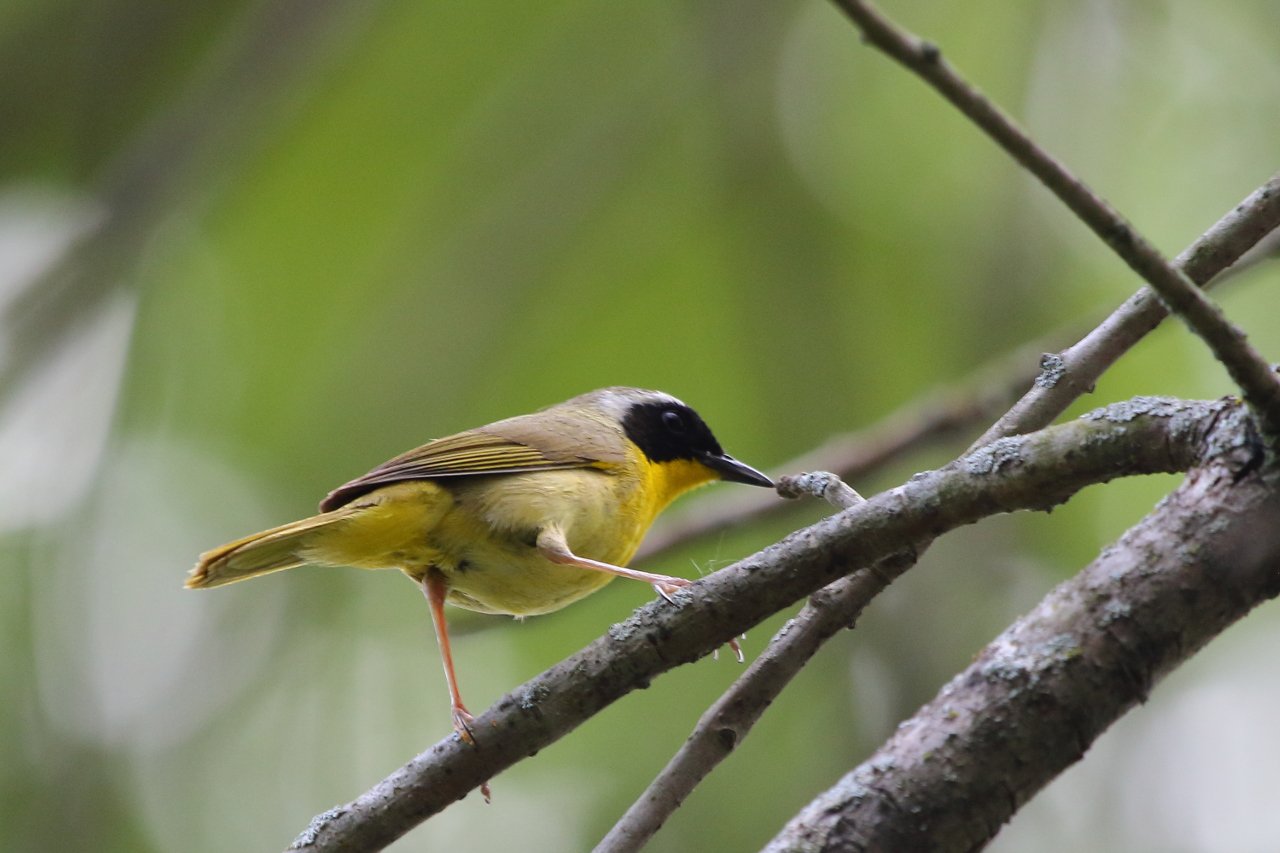Bird of the Month: Common Yellowthroat
Male Common Yellowthroat. Photo by Jeff Bryant.
By Roger Digges, CCAS Vice-President
Last month I introduced the first flycatcher in this series, the Eastern Phoebe. This month I present the first member of the warbler family. Warblers are small, very active, often colorful (especially males), insect eaters. Spring is a great time to find warblers, as many migrate through our area; males are wearing their distinctive breeding plumages, and trees haven’t fully leafed out. But catching a good look at warblers can still be difficult. Unlike the Eastern Phoebe, which sits on a perch waiting for an insect to fly by, most warblers move constantly, flitting from leaf to leaf, gleaning insects from their surface. By the time one gets binoculars trained on where they saw the warbler, the bird has often moved on. Since a number of warblers feed high in trees, birders may also develop “warbler neck” from looking so high up. It may take considerable patience and perseverance to see them. I highly recommend participating in the Champaign County Audubon Society’s spring Sunday Morning Bird Walks as a great way to learn the skills of finding and identifying many of the 35 species of warbler that have been seen in our area.
Though viewing warblers can be difficult, to introduce the warbler family this month, I chose a bird more likely to stay still for a while, which perch low enough that you won’t get warbler neck, and are the most common warbler to nest in our area. According to allaboutbirds.org, “Common Yellowthroats live in thick, tangled vegetation in a wide range of habitats—from wetlands to prairies to pine forests—across North America.” As frequent walkers at Meadowbrook Park in Urbana, my wife, Cathy, and I hear and see them throughout late spring and summer. Males are quite striking with olive backs, bright yellow throats (hence the name), and a black mask. Although evolution has made the female plumage much less noticeable, as they lack the male’s distinctive black mask, they still have yellow throats. While yellowthroats prefer to stay hidden, you can easily hear the males’ wichity-wichity-wichity song that can tell you where to find them. Some perch high enough to be easily seen if, as with all warblers, you are patient and persevere.
After they mate, female yellowthroats take 4 to 5 days to build a well-hidden nest near the ground in dense vegetation. She incubates 1 to 6 eggs for 12 days while she is fed by her mate. Their young leave the nest after another 12 days. While Brown-headed Cowbirds often lay their eggs in Common Yellowthroat nests, as they do those of many other birds, yellowthroats have lived with them long enough to have developed some strategies. They may abandon a parasitized nest or even build another nest right on top of it.
Unless you have a large area of pasture or other dense vegetation near your house, you are unlikely to be able to attract Common Yellowthroats to your property. But you can advocate for protecting places they use and visit those places.
How are Common Yellowthroats doing? According to the North American Breeding Bird survey, their numbers declined 26% between 1966 and 2019, likely due to habitat loss and pesticide use. Fortunately, there are still about 77 million of them in North America.
Female Common Yellowthroat. Photo by Jeff Bryant.


